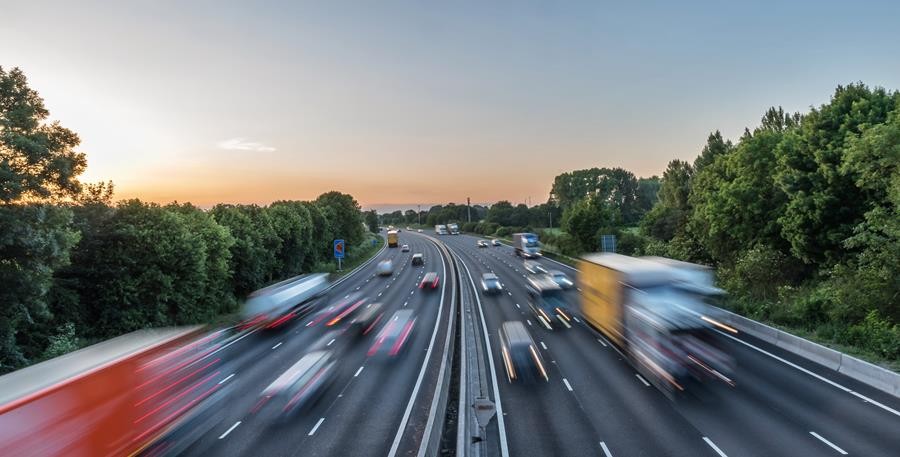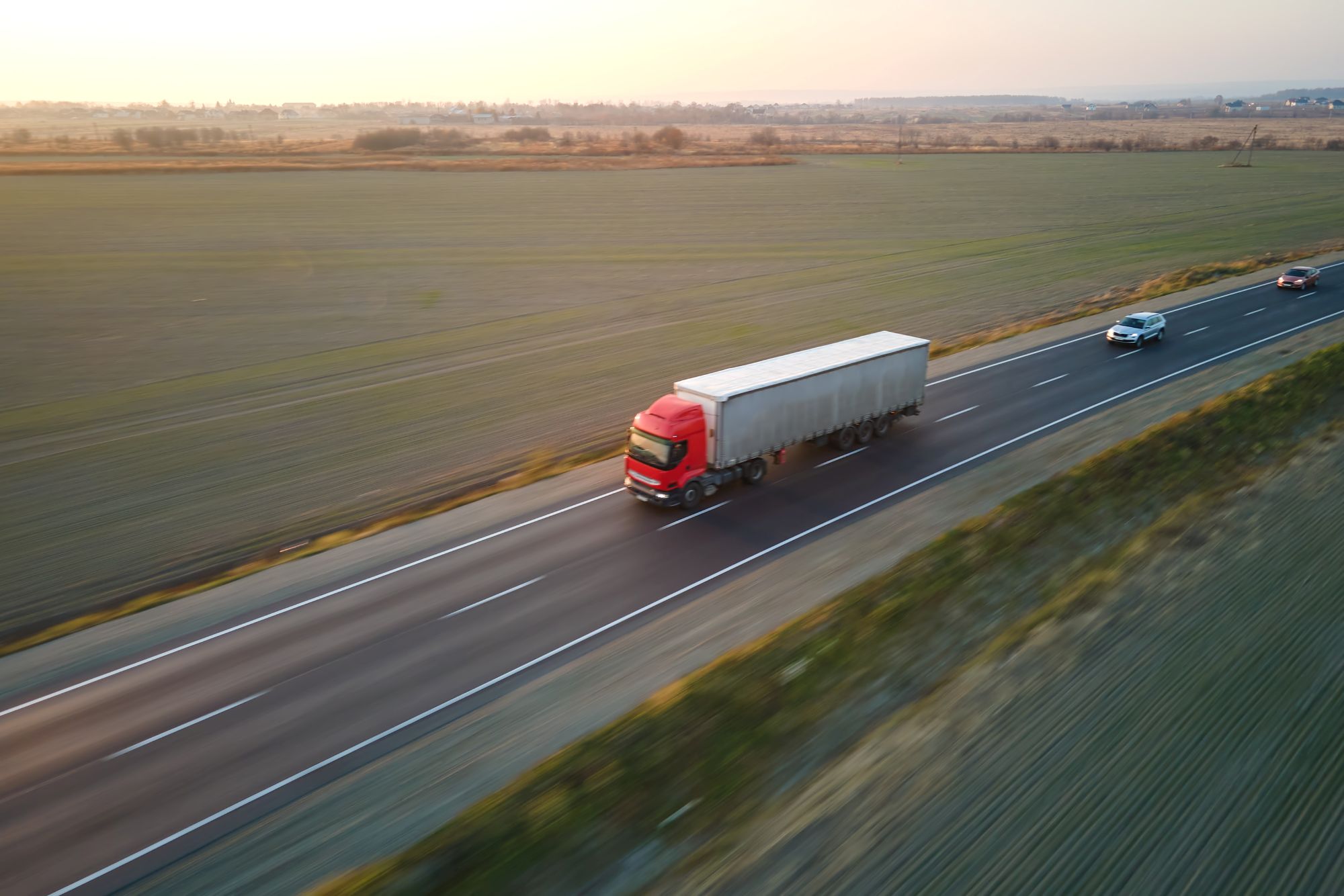
Susie Jones
De weg naar duurzaamheid: De Europese emissie-uitdaging in de transportsector
Gemaakt: 08-08-2024
•
Bijgewerkt: 08-08-2024
Een rapport uit 2024 van Clean Technica onthulde dat meer dan 25% van de uitstoot van het wegverkeer afkomstig is van de transportsector in Europa - waarbij zware bedrijfsvoertuigen verantwoordelijk zijn voor 85% van de uitstoot (bussen en touringcars vormen de rest).
In het huidige tempo zal de transportsector alleen al bijna de helft van Europa's broeikasgasemissies in 2030 voor zijn rekening nemen - Europa's transportemissies zijn sinds 1990 met meer dan een kwart blijven stijgen. De uitstoot in de hele economie is gedaald, maar sinds de piek in 2007 is de transportsector meer dan drie keer zo langzaamgedecarboniseerd dan de rest van de economie.
Wat is de oorzaak van de stijgende CO2-uitstoot in de transportsector?
Sinds de toename van e-commerce en thuisbezorgdiensten is de vraag naar meer vrachtwagens op de weg aanzienlijk gestegen. Als gevolg hiervan is de CO2-uitstoot in de transportsector toegenomen.
Uit een rapport van [Clean Technica] (https://cleantechnica.com/2024/05/13/eu-wisely-stiffens-road-freight-passenger-emissions-guidance/) over de binnenlandse vrachttonnage voor verschillende modaliteiten (weg, spoor en water) bleek dat vrachtvervoer over de weg dominanter was in Europa dan over het spoor en het water in vergelijking met andere regio's (VS en India). Hoewel China meer afhankelijk is van vrachtvervoer over de weg, onthulde het rapport dat het land werkt met ongeveer 600.000 elektrische vrachtwagens om goederen af te leveren.

Welke plannen zijn er in Europa om de CO2-uitstoot te verminderen?
Het Europees Parlement heeft de [Europese klimaatwet] (https://climate.ec.europa.eu/eu-action/european-climate-law_en#:~:text=The%20European%20Climate%20Law%20writes,2030%2C%20compared%20to%201990%20levels.) aangenomen om de stijgende CO2-uitstoot aan te pakken. Als onderdeel van deze wet is de EU-doelstelling om de netto-uitstoot van broeikasgassen tegen 2030 te verminderen, verhoogd tot minstens 55% - waardoor klimaatneutraliteit tegen 2050 wettelijk bindend wordt.
In mei 2024 hebben de EU-landen een wet goedgekeurd om de CO2-uitstoot van vrachtwagens te verminderen. Volgens de nieuwe wet moeten nieuwe zware bedrijfsvoertuigen die vanaf 2040 in de EU worden verkocht, emissievrij zijn en moet de CO2-uitstoot van nieuwe vrachtwagens in datzelfde jaar met 90% zijn verminderd. Fabrikanten moeten een grote hoeveelheid volledig CO2-vrije vrachtwagens verkopen - bijvoorbeeld elektrische en waterstofvoertuigen - om de resterende verkoop van voertuigen met CO2-uitstoot te compenseren.
Welke maatregelen kunnen wagenparkbeheerders nemen om de CO2-uitstoot te verminderen?
Wagenparkbeheerders kunnen maatregelen nemen om hun CO2-uitstoot te verminderen:
Hard remmen, snel accelereren en stationair draaien kunnen het brandstofverbruik en de uitstoot van broeikasgassen verhogen - Hoewel het monitoren van het gedrag van chauffeurs een uitdaging kan zijn, kan AI-technologie chauffeurs en wagenparkbeheerders continu feedback geven. Lees meer over hoe AI een positieve invloed kan hebben op duurzaamheid in de transportsector.
Vloten met oudere voertuigen kunnen overstappen op waterstofhydrolyse (HVO), waterstof of elektrisch aangedreven vrachtwagens om de uitstoot aanzienlijk te verminderen. Wagenparkbeheerders moeten echter rekening houden met de afstand die voertuigen op alternatieve brandstoffen kunnen afleggen en de kostenimplicaties.
SNAP Account](https://snapacc.com/) stelt wagenparkbeheerders in staat om minder omrijkilometers te maken - met meer dan 600 servicepartners die beschikbaar zijn voor SNAP Account-klanten, kunnen wagenparkbeheerders overnachtingsstops plannen voor hun chauffeurs onderweg.
Is de infrastructuur aanwezig om elektrische vrachtwagens op te laden?
Volgens een PwC-studie zal in 2030 een derde van alle vrachtwagens in Europa elektrisch zijn. Aangezien wagenparkbeheerders stappen zetten in de richting van elektrificatie, moeten truckstops in heel Europa kunnen voldoen aan de vraag naar elektrische laadstations.
De aanleg van de infrastructuur zal voor veel truckstops en servicestations kosten met zich meebrengen. De stations die al EV-laders hebben, bevinden zich echter in een goede positie om te profiteren van toekomstige golven van elektrische vrachtwagens. Tegen 2030 zal het aantal openbare oplaadstations in Europa toenemen tot meer dan 3.600 - De EU heeft een ambitieuze oplaadwet voorgesteld met de Alternative Fuel Infrastructure Regulation (AFIR). De AFIR is van plan om het hoofdwegennet uit te rusten met oplaadpools om de 60 km, zodat er genoeg oplaad-energie en waterstofcapaciteit is om 9% van het vrachtwagen- en buspark emissievrij te maken tegen 2030.
Welk Europees land heeft de meeste CO2-uitstoot?
In 2021 waren Duitsland, Frankrijk en Italië verantwoordelijk voor de hoogste totale uitstoot van broeikasgassen (BKG) - variërend van 375.000 tot 740.000 kton CO2. Landen met een grotere bevolking produceren echter meer broeikasgasemissies - daarom geeft het bekijken van de totale broeikasgasemissies een vertekend beeld.
Kijken we naar een onpartijdig beeld van de uitstoot, dan zien we een ander beeld - Luxemburg, Ierland en Tsjechië produceerden in 2021 de hoogste uitstoot per hoofd van de bevolking in de EU.
Wat is de milieuvriendelijkste manier om goederen te vervoeren?
Goederen vervoeren per spoor is een van de schoonste vervoerswijzen, maar het biedt ook andere voordelen:
Vermindert opstoppingen op de weg, wat bijdraagt aan een betere luchtkwaliteit.
Het spoor biedt een snellere manier om goederen te vervoeren en verwijdert zware verkeersobstakels.
Vrachtwagens op alternatieve brandstoffen zijn een andere milieuvriendelijke manier om goederen te vervoeren. Waterstofbehandelde plantaardige olie (HVO) kan onmiddellijk tot 90% van de uitstoot van broeikasgassen verminderen in vergelijking met standaard diesel gedurende de hele levenscyclus van het product. Certas Energy HVO staat achter de overstap naar een schoner alternatief - en helpt bedrijven hun duurzaamheidsdoelstellingen te halen en zinvolle stappen te zetten op weg naar hun netto nul toekomst.



